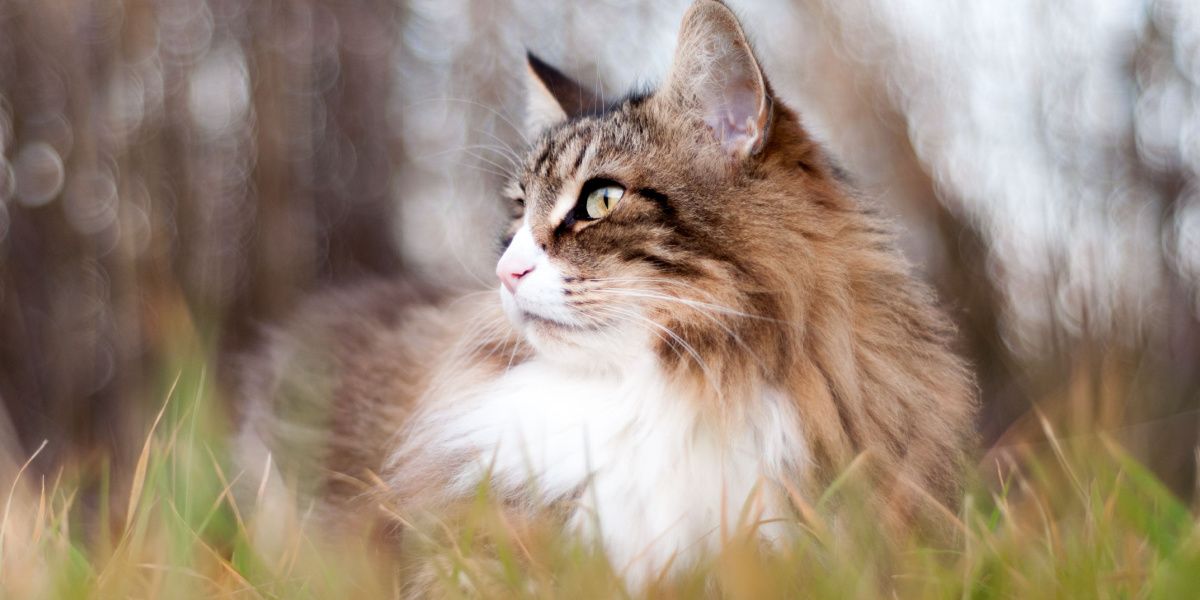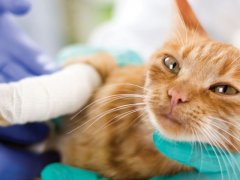
Shutterstock.com
Cats’ eyes are structurally different from ours—built to facilitate hunting small prey in dim light. These fierce predators can detect a tiny bug from across the house and spot a laser pointer out of the corner of their eye. So why do they miss a treat when it’s right next to their paws? What do our cats really see as they gaze at the world around them?
Cat vision is different from human sight, including differences in their night vision, peripheral vision, and long distance sight. Cats don’t see the same colors as us, probably seeing less variation and much more muted shades.
Cats use other senses along with vision to "see" the world, including hearing, scent, and tactile whiskers.Key Takeaways
In What Ways Are Cats’ Eyes Different?
Do cats see the same colors, brightness, and contrast as humans? Likely not. The anatomical variations between human and cat eyes mean they see the world a bit differently. The size and shape of cats’ eyes are designed for their habits and environment. Cats have elliptical pupils that can narrow to thin, vertical slits. This is used for depth perception and distance control, which is essential in hunting.
Cats have a third eyelid (or nictitating membrane) that rests at the front of the eye. It can sweep across the surface of the cornea, washing away dirt and debris. Another difference is in the retina at the back of the eye, which contains the light receptors that convert light into vision. These cells are called “rods” and “cones.” Cats and humans both have them but in very different proportions.
Much of a cat’s anatomy and physiology is designed for their evolution as natural hunters. They are obligate carnivores with athletic limbs, an excellent sense of smell, and the ability to creep silently through the landscape.
Newborn Kitten Vision
Did you know that cats’ eyes are always blue for the first few weeks of their life? A cat’s first view of the world is when their eyes open at around 8–12 days old. Your kitten will likely see a blurry version of their surroundings at this early stage, as their vision is not yet fully developed.
Their pupils are also still learning how to dilate and contract in response to light, so keep them away from bright light. As kittens become more active and alert, beginning to explore their exciting new world, their vision also improves.
Low Light Conditions

A cat’s vision is adapted to see well in low-light conditions, making them excellent dusk and dawn hunters. Shutterstock.com
Cats are most active at dawn and dusk—the perfect time to find small prey out and about. Their eyes are, therefore, well adapted to dim light, with high numbers of rod receptors improving their night vision well beyond ours.
They also have a “tapetum lucidum”, a reflective layer right at the back of the eye that gives small amounts of light a second chance at hitting those all-important photoreceptors, which convert light into vision.
Short Distances
Feline hunting behavior usually involves stealthy stalking of prey, leading to a final pounce performed at close range. Cats have little need for long-distance vision, and can likely only see about 20 feet in front of them.
They also can’t see very well at very short distances, as the muscles that control the cat’s pupils can’t focus the vision closely. Cat vision is sharpest at around that 20-foot mark, with objects closer and further away from that likely looking blurry and unfocused.
Peripheral Vision
Human eyes have a visual field of around 180 degrees. Cats have a wider field of vision at around 200 degrees due to their increased number of rod cells. Feline eyes are forward-facing, but this wider peripheral vision helps them see a greater range of the surrounding landscape, useful for spotting small prey.
Do Cats See in Color?
We now know that cats see well in dim light and at distances of around 20 feet, but with a fairly wide periphery of sight. But is this slightly blurry view of the world seen in color by cats?
Color vision amongst animals varies immensely, and depends on the type and number of cone cells present in the retina.
Humans have three types of cones, allowing us to see red, green and blue. Some species of fish and birds have four types, allowing them to see light on the ultraviolet spectrum. Other animals, usually nocturnal ones such as raccoons, have poor color vision due to only having one photopigment. Other mammals, such as dogs and horses, have two types of cones, and can see blue-violet light but can’t differentiate yellow-green or red light – similar to people who are red-green color-blind.
Cats fall somewhere in the middle of this spectrum. Like humans, they have three types of cones, but they have a lot less of them than we do. The exact consequence of this is highly debated, but it is likely that cats don’t see the same richness of hues that we do. They also likely have a reduced color spectrum. Recent research has hypothesized that cats see most like people who are red-green color blind.
Seeing the World Through the Senses

Cats rely on much more than their sight for navigating the world – they also have sensitive whiskers, hearing and sense of smell.
When we talk about how we see things, it’s easy to assume we’re talking only about vision. For us humans, vision is a primary sense. It is of huge importance to our everyday lives.
As we’ve already seen, vision is important to cats too, and their eyesight is particularly well adapted to their lifestyle. However, cats also use their other senses to navigate the world around them.
Whiskers
Cats use their whiskers as a tactile vision-system, helping them ‘see’ their immediate surroundings. Whiskers are useful for both balance, spatial awareness and navigation – essential for negotiating tricky situations such as tight spaces.
Scent
Cats have an excellent sense of smell. With over 200 million scent receptors in those cute noses – over forty times more than humans! – it’s not surprising. Your cat may not be able to see far into the distance, but they can certainly pick up on much more subtle scent clues than we can. This helps them understand the world around them.
Hearing
Another well-perfected sense in our feline companions is their hearing. Cats can hear sounds four to five times further away than humans can. They can also hear a greater range of sounds. They are particularly attuned to high-pitched sounds (imagine a mouse squeaking) and can distinguish sounds being made only a few inches from each other.
Cats See the World Just Right
So, how do cats see the world? Exactly as they are supposed to. With their vision adapted to quick-moving, short-range prey in dim light, and other senses primed for navigating their immediate environment, cats are the ultimate hunters. Most active at dawn and dusk, our precious cats can snooze the daytime away, when vibrant colors and bright lights don’t work to their advantage.
Frequently Asked Questions
What do cats’ vision look like?
Cats’ eyesight is well adapted for low light conditions with a wide peripheral field of vision, but also with an inability to see long distances. They also see a reduced color spectrum that is different from our own.
Can cats see the way humans do?
A cat's vision varies from a human’s in a few ways. Cats can see better in lower light than us, and have a wider peripheral field of vision. However, they are not good at seeing long distances, and can see much less vibrant colors than humans.
Why do cats stare at you?
Cats may stare at you when they want something, when they are curious about what you are doing, when they are scared or stressed, or conversely, when they are feeling relaxed and sleepy. If they give you a slow blink while staring, this is a sign of affection and trust.







